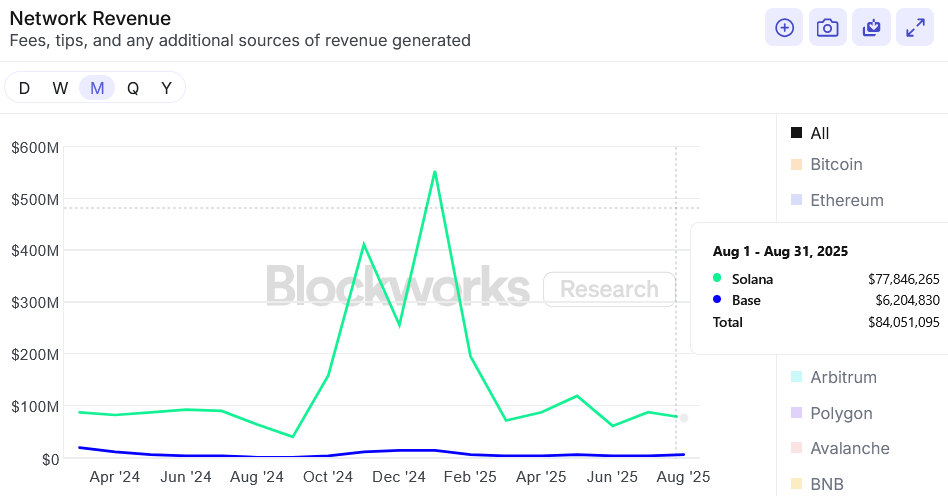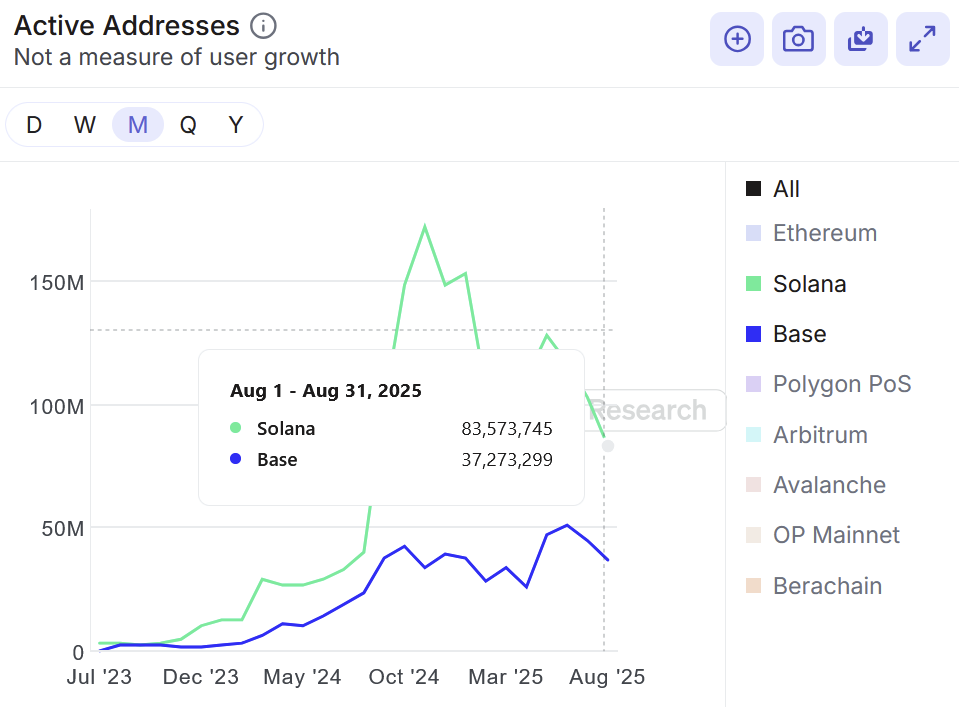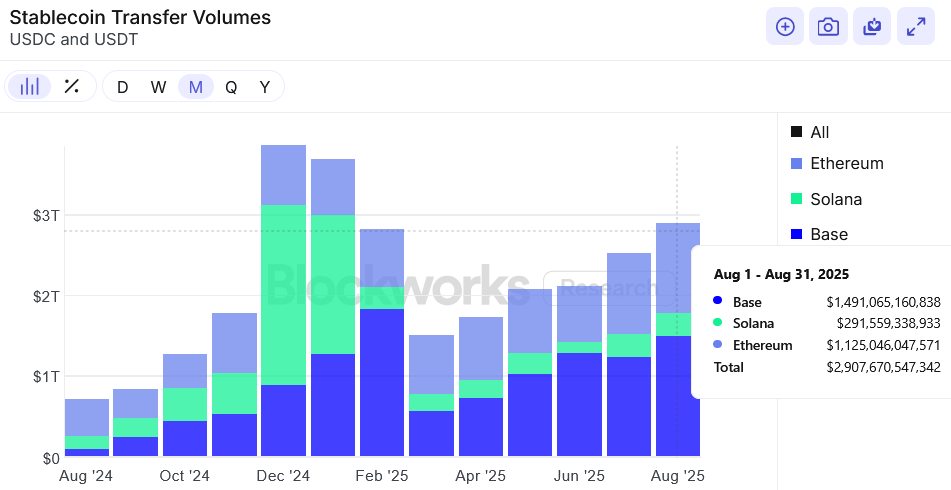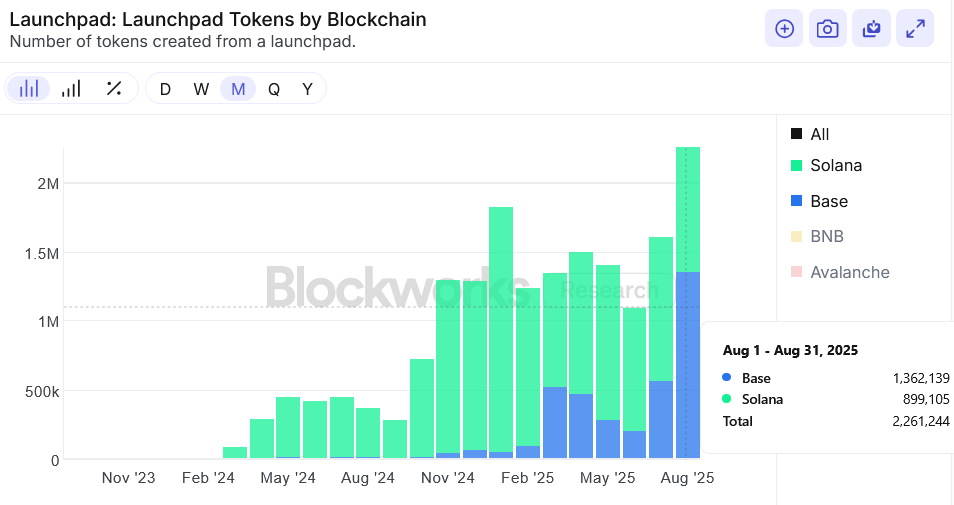Solana vs. Base: Ethereum’s Hottest L2 Takes On The Speed Demon - Who Wins The Scaling War?
Two titans clash in the blockchain arena as Base, Ethereum's most active layer-2, goes head-to-head with Solana's raw throughput beast.
The Scaling Showdown
Base leverages Ethereum's security while slashing gas fees to pennies—Solana bypasses legacy constraints entirely with parallel processing that hits 65,000 TPS. Different philosophies, same goal: dominate the future of decentralized finance.
Developer Exodus or Ecosystem Explosion?
While Base rides Ethereum's network effects, Solana's developer migration continues accelerating. Builders chase users—and users chase speed. The chain that captures both wins the next cycle.
Institutional attention splits down the middle: TradFi prefers Ethereum's regulatory clarity, while degens flock to Solana's low-cost chaos. Because nothing says 'mature financial system' like trading meme coins at light speed while Wall Street bankers scratch their heads.
One chain builds cautiously within the system—the other rewrites the rules entirely. Place your bets.

Ethereum researcher Justin Drake himself has echoed this in the past: “In my mental model, it’s the L2s that are competing with Solana, not the Ethereum L1 directly.”
If the real battleground is execution, then the more appropriate matchup may be solana vs. Base, Ethereum’s most active L2 backed by the full weight of Coinbase distribution.
Let’s look at how both these chains compare on headline network metrics.
Network usage
In August, Solana’s REV (all fees and tips paid to transact on the network) was $77.8 million, far exceeding Base at $6.2 million.

Active addresses on Solana too, outpaced Base by 124% in August.

Application revenues
One measure of how successful a blockchain is looks at the value captured by apps built on top of it.
On this measure, Solana too beats Base by a mile. Solana app revenues generated $136 million in August, vs. $21 million for Base.


Spot DEX volumes
How much are users trading on Solana and Base? On spot DEX volumes, Solana has consistently outperformed Base. In August, Solana had about $118 billion in volumes, against $53 billion for Base.

Stablecoins
The below charts compare Base and Solana’s stablecoin supply. Base has $4.3 billion, considerably lower than Solana’s stablecoin supply of $11.2 billion.

Despite lower supply, though, Base sees a higher velocity of stablecoin transfer volumes. Transfer volumes in August were $1.5 trillion, compared to Solana’s $292 billion.

While Solana outcompetes L2s in most metrics, the one area where Solana pales in comparison is circulating stablecoins, especially relative to Ethereum ($167 billion), Blockworks Research’s Carlos Gonzalez Campo told me.
Memecoin wars
Solana’s top spot as the “memecoin chain” saw its first serious challenge last month. Tokens launched from memecoin launchpads on Base exceeded Solana, largely due to the rise of Zora.

It’s too early to write Solana off, though. Launchpad tokens on Solana still command far higher trading volumes (and market caps) than their Base counterparts, a crucial data point since transaction activity is a key revenue stream for blockchains.

Base’s recent lead in new token launches over Solana indicates increased developer interest — likely aided by its Coinbase integration, Blockworks Research’s Dan Shapiro told me.
“However, Solana remains the revenue juggernaut, pulling in consistently higher network fees and boasting a significantly larger active user base.”
Conclusion
Aside from stablecoin transfer volumes and memecoins launched, Solana outcompetes Base on most headline chain metrics.
Solana is still the frontrunner, but there are a few caveats worth noting.
First, this comparison isolates Solana against a single L2. Yet, Ethereum’s broader rollup ecosystem has at least a hundred L2s. Put together, they may exceed Solana in aggregate throughput.
Second, benchmarking stablecoin supply and DEX volumes against Base alone doesn’t show the full picture. Ethereum itself posts larger figures than Solana on these measures, and remains an economic hub for the EVM ecosystem in its own right.
Finally, Ethereum’s chain security and decentralization remain unmatched. Compared to Solana, Ethereum’s validator set is vastly larger, has lower barriers to entry and greater client diversity. From that perspective, one could argue that Base inherits stronger security because it settles on a more decentralized foundation.
The contest over “which chain is better” ultimately depends on the weight given to different metrics, making the comparison less an objective truth and more a matter of subjective perspective.
- The Breakdown: Decoding crypto and the markets. Daily.
- 0xResearch: Alpha in your inbox. Think like an analyst.
- Empire: Crypto news and analysis to start your day.
- Forward Guidance: The intersection of crypto, macro and policy.
- The Drop: Apps, games, memes and more.
- Lightspeed: All things Solana.
- Supply Shock: Bitcoin, bitcoin, bitcoin.

